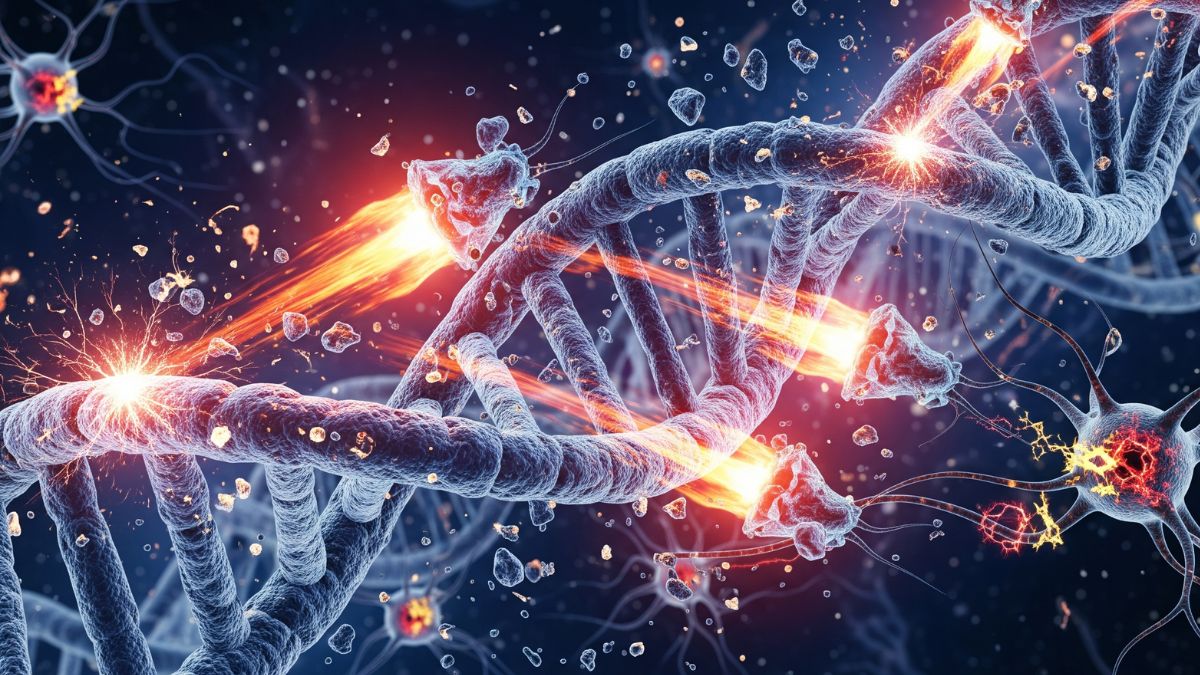Science
Ten Minutes is Enough: How AI is Changing People’s Minds
07 January 2026

Dormant viral fragments hide in every human genome. They can wake — and strike. It’s not sci-fi but a live hypothesis for some diseases. Scientists now probe how “jumping genes” shape the brain — and whether viruses in our DNA can be safely silenced.
Our genomes carry vast traces of ancient infections. Researchers estimate 40 percent of human DNA comes from long-dead viruses. Most of these elements are retrotransposons — “jumping genes” that copy and paste themselves into new spots on chromosomes. For years, scientists dismissed them as harmless “junk DNA.” However, new findings force a rethink. Do viruses in our DNA pose a threat?
In 2008, neurologist Renée Douville observed something striking in the brains of people who had died of amyotrophic lateral sclerosis (ALS): viral proteins. Yet those patients had no active viral infection. Where did the proteins come from? The best explanation is that retrotransposons had awakened and begun to replicate.
Evidence keeps mounting that these hidden virus-genes may underlie some cases of neurodegenerative disease, including ALS and Alzheimer’s. What brings them back to life? Most likely aging and associated cellular stress. Normally, our cells lock these elements down, packing them tightly into specific DNA regions. With age, though, those “doors” can crack open, letting retrotransposons slip free.
When the virus-genes wake, a “retrotransposon storm” can follow — a term scientist Josh Dubnau coined after studies in fruit flies and mice. His work shows that activating jumping genes in brain cells can prompt those cells to kill their neighbors, driving neurodegeneration. Worse, a vicious cycle forms: retrotransposon activation disrupts key proteins — such as TDP-43 in ALS or tau in Alzheimer’s — and those protein malfunctions, in turn, fuel further activation of the virus-genes.
Read also: 100 Million Years in a Deadly Trap: How Zombie Fungi Operate
If retrotransposons behave like viruses, can antivirals stop them? Researchers asked exactly that — and early answers look promising. Antiretroviral drugs used against HIV block an enzyme critical for retrotransposon replication.
In mice, fruit flies, and cell models, these medicines suppress jumping-gene activity and reduce neurodegeneration. Human studies, while still limited, add cautious hope. As reported in Amyotrophic Lateral Sclerosis and Frontotemporal Degeneration, patients with ALS who received anti–virus-gene drugs showed a slower disease course. Similarly, a small trial in early Alzheimer’s found the approach safe (published in npj Dementia).
Scientists are now widening the lens to explore links with Parkinson’s disease, multiple sclerosis, and other conditions. For now, drug candidates that target viruses in our DNA remain in clinical testing. How many disorders trace back to these genomic stowaways — and can we switch them off without serious side effects? The next few years should bring the answers.
Last take-away:
Bottom line: evidence is building that viruses in our DNA can awaken, damage brain tissue, and — crucially — might be tamed by targeted antivirals.
Read the original article: Aż 40 proc. Twojego DNA to wirusy. Co się stanie, jeśli się obudzą?

Science
06 January 2026


Zmień tryb na ciemny